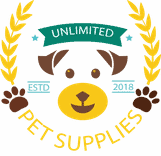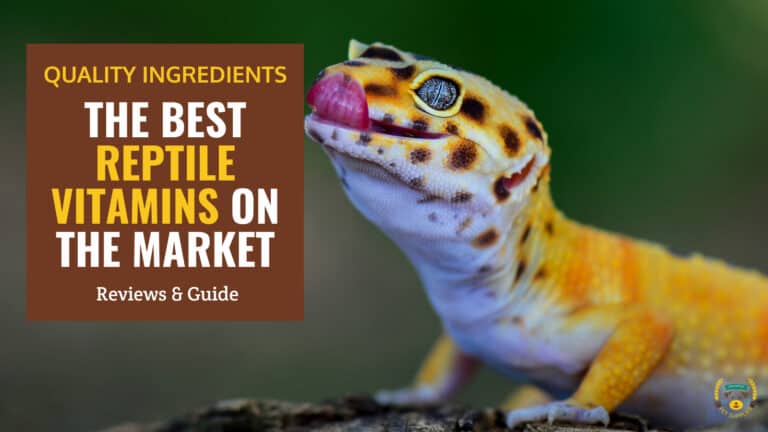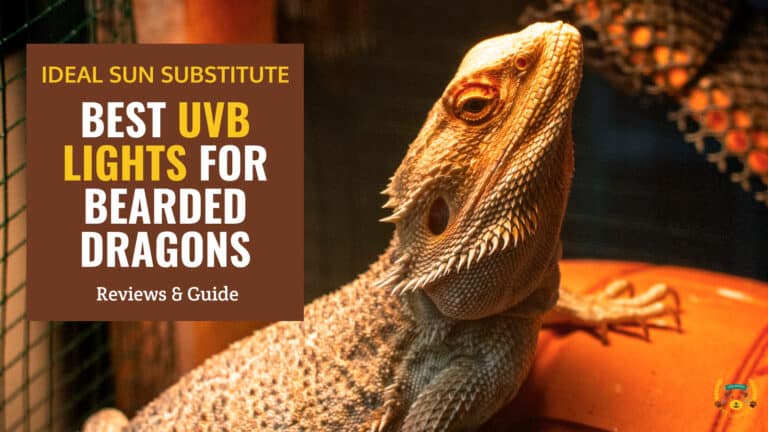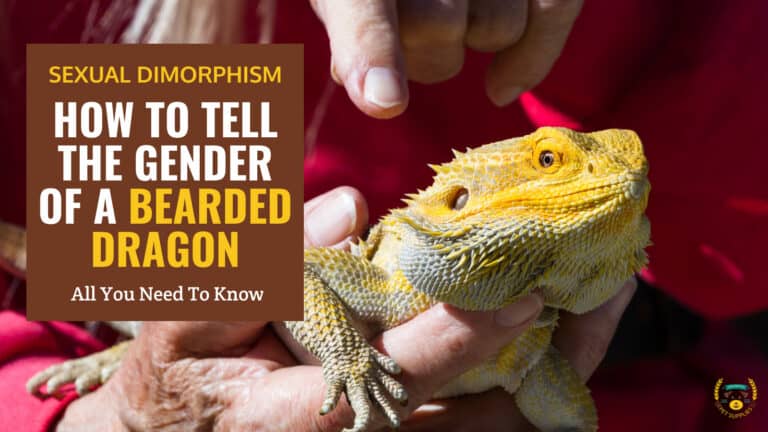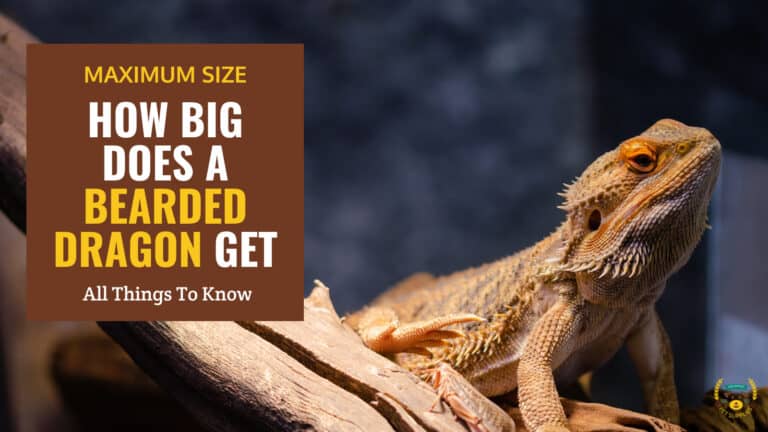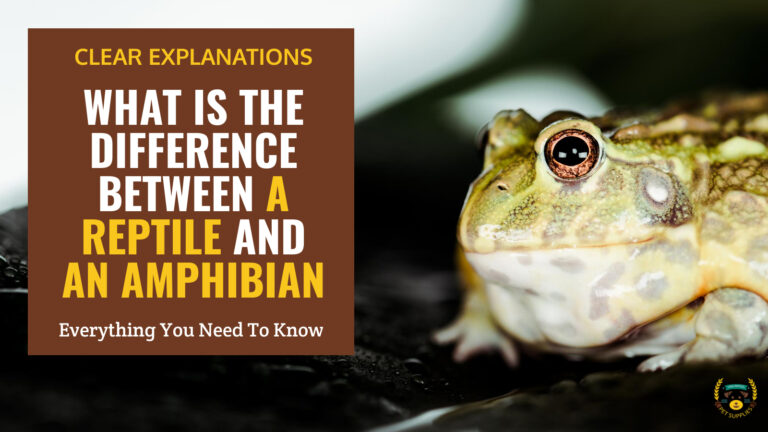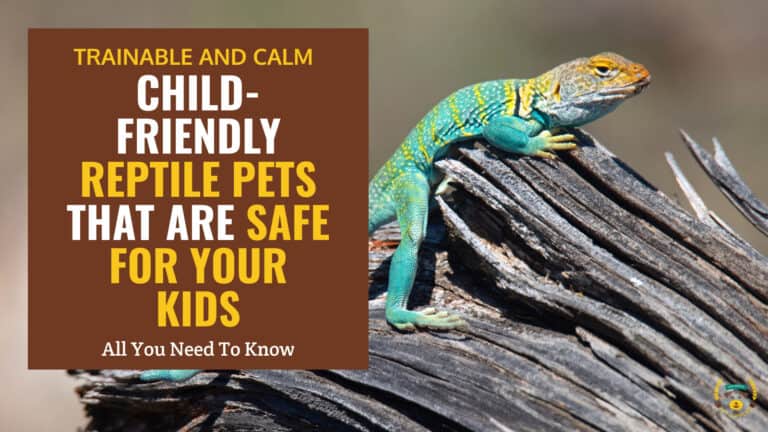Top 10 Best Bearded Dragon Substrates and Carpets for a Perfect Terrarium
Last updated: March 9, 2024
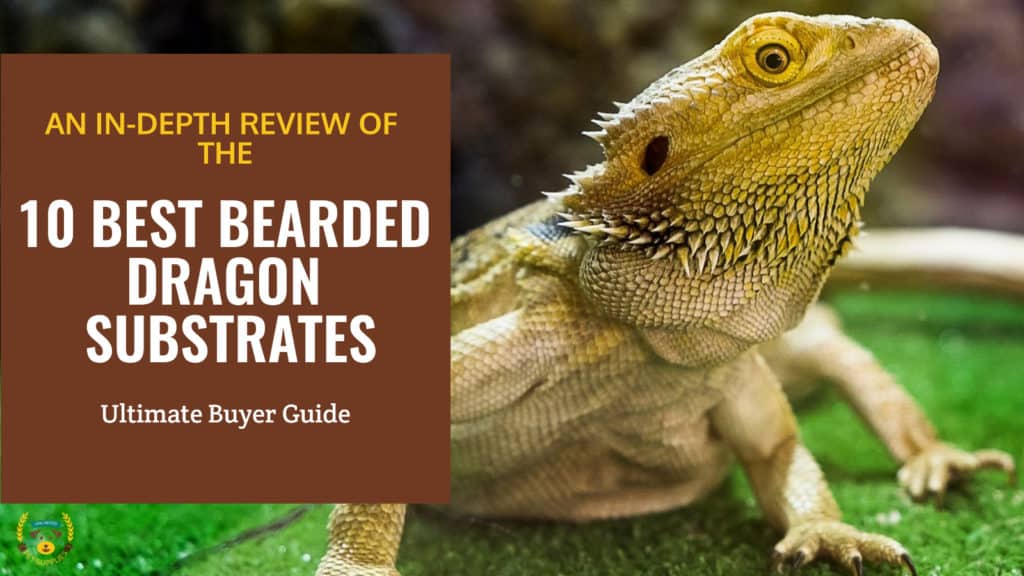
Summary
Our top pick for the Best Bearded Dragon Substrate and Carpet is the Zilla Reptile Terrarium Bedding Substrate Liner. It is a non-abrasive, eco-friendly liner that is easy to clean, super absorbent, and safe for bearded dragons. It comes in a large sheet that can be cut to fit any enclosure, and it is very affordable.
Having the perfect bearded dragon habitat includes the substrate you will use to give your little reptile friend a comfortable abode, which will be a major determining factor for the type of environment your reptile will enjoy.
A good quality substrate is a critical part of a bearded dragon habitat. It's not just a carpet but a special flooring inside the bearded dragon tank that will keep them happy and healthy.
Choosing the best substrate for your bearded dragon can be complicated. This guide discusses the materials to use and what to avoid when selecting suitable flooring for a bearded dragon terrarium.
Basically, the substrate is the carpet covering the floor of the bearded dragon's enclosure. The best Bearded Dragon substrate is dry and does not absorb a lot of humidity, as these small creatures are native to the deserts of Australia [1].
Bearded Dragons are one of the most popular favorite reptiles available today. Their complex personalities make them fantastic pets. They're fun to watch and incredibly social with each other. However, making a Bearded Dragon habitat is not as easy as it sounds. Choosing a substrate can be difficult and confusing.
These small reptiles have their homeland in Australia and mostly live in a habitat near humans; they were introduced into the United States in the 1990s and since have become one of the most popular lizards kept as a pet. They are characterized by a long tail that can be longer than the rest of the body, which it uses to help maintain balance, and a high, domed, horn-like crest located above the eyes used in mating displays.
So now that you are excited to get home a bearded dragon, did you plan where you can comfortably place them?
Choosing the right substrate for a bearded dragon's enclosure is among the first and most important challenges first-time bearded dragon keepers face when building the habitat.
Opinions on bearded dragon terrarium flooring vary widely in the dragon keeper community.
Below, we compiled a list of the top 10 best substrates that you can choose and get the pros and cons of each option. But before that, let's know why the substrate is so imperative for your reptile friend!
-
1)
Top 10 Best Bearded Dragon Substrates
- 1.1) #1 Zilla Reptile Terrarium Bedding Substrate Liner
- 1.2) #2 Zoo Med Eco Cage Reptile Carpet
- 1.3) #3 Zilla Ground English Walnut Shells Desert Blend
- 1.4) #4 BLSMU Reptile Coconut Fiber Carpet
- 1.5) #5 Reptile Sciences Terrarium Sand
- 1.6) #6 Zoo Med ReptiFresh Odor Eliminating Substrate
- 1.7) #7 Critters Comfort Coconut Reptile Bedding Organic Substrate
- 1.8) #8 Exo Terra Reptile Sand Mat
- 1.9) #9 Zoo Med Excavator Clay Burrowing Substrate
- 1.10) #10 ZeeDix Coconut Fiber Carpet
- 2) Why Is It Essential to Set up a Suitable Habitat for Your Bearded Dragon?
- 3) What are the different kinds of bearded dragon substrates?
- 4) What to Look For in a Good Substrate for Your Bearded Dragon?
-
5)
Frequently Asked Questions
- 5.1) How to Clean Bearded Dragon Substrate?
- 5.2) Is Coconut Substrate Good for Bearded Dragons?
- 5.3) Can You Use Paper Bedding For Bearded Dragons?
- 5.4) Is Sand OK For Bearded Dragons?
- 5.5) What Happens If My Bearded Dragon Eats Sand?
- 5.6) What Other Things Do Bearded Dragons Need In Their Enclosure?
- 6) Final Thoughts
Top 10 Best Bearded Dragon Substrates
Bearded dragons are a lot of fun to keep as pets, and they are a great little reptile to have around.
These fantastic pets require a suitable substrate that is safe for their health and easy to keep clean. Some of the substrates on the market today are not safe for bearded dragons; others are difficult to keep clean.
So we've compiled a list of the 10 best-bearded dragon substrates and carpets that are always recommended for this beautiful reptile.
Zilla Reptile Terrarium Bedding Substrate Liner
The Zilla Reptile Terrarium Bedding Liner is one of the best substrates for bearded dragons as it prevents irritation to your pet's delicate feet. It is an eco-friendly terrarium liner crafted from non-abrasive materials and biodegradable enzymes. Hence this substrate functions as an absorbent and removes the unpleasant odor from the bearded dragon tanks.
It is a lightweight liner weighing 6.4 ounces. It has ease of maintenance and can fit into any bearded dragon enclosure. All you need to do is roll it out and cut it to the shape of the tank to make a comfortable flooring.
It is low-maintenance bedding perfect to have a hassle-free pet experience with your bearded dragon. Placing it inside the tank resembles a brown or green carpet, a perfect replica of the environment where these beardies dwell.
Pros
- Easy to clean
- Super Absorbent
- Safe because it's a non-particle carpet
- comes in a large sheet, and is super easy to cut
- Super affordable
Cons
- Nothing we can think of and most owners like this carpet
If it gets dirty, you can rinse it with cold water and place it back in the tanks. It is an ideal substrate as it has no loose particles, thereby reducing the chance of accidental ingestion as your pet tries to search for food on the bedding. It is ideal for juvenile reptiles and has earned acclamation from the United States Association of Reptile Keepers.
See On ChewyZoo Med Eco Cage Reptile Carpet
Can plastic bottles be eco-friendly for your reptiles? Yes, and it is one of the best substrates for bearded dragons. The Zoo Med Eco Cage Carpet is a premium substrate for your reptile friend's terrarium.
This substrate is crafted from recycled plastic bottles and is devoid of loose particles, so it is great if your reptile is still a baby as there is no risk of accidental ingestion.
The substrate is highly absorbent and best suited for the beardies to walk on in a natural environment without risking some accidental cuts.
The ease of maintenance is another eye-catching feature of this substrate-this non-abrasive bearded dragon carpet aids in scooping out the waste efficiently. Once soiled, you can rinse it in cold water and place it back in the terrarium.
Pros
- Safe for Bearded Dragon
- Cheaper than in pet stores
- Easy to clean
- Natural and green
- Very absorbent
Cons
- Doesn't fit some large tanks
Made from recyclable plastic bottles, this substrate is exceptionally affordable. It is available in different sizes, and the largest has a dimension of 48 * 13 inches. However, you can easily cut it to any shape and size to suit the area of the bearded dragon tank.
See On ChewyZilla Ground English Walnut Shells Desert Blend
Does your bearded dragon like the desert climate? If so, you can recreate a bearded dragon desert habitat with an attractive, 100% natural ground English walnut shell from the Zilla Ground Desert Blend.
This substrate provides a natural environment with a desert floor look to the bearded dragon terrarium.
It is a natural ground English walnut shell substrate that excellently retains the heat, which will reduce the humidity level within the tank and make your reptile friend feel at home.
Such a substrate is ideal for amphibians, snakes, and reptiles as it prevents the growth of molds on the bearded dragon's surface and refrains from staining the pet's skin.
It is budget-friendly, stimulates natural digging and burrowing behavior, and recreates a typical dwelling environment for dragons. It is a suitable alternative to sand that can cover the entire flooring and lasts a long time before you need to get a new one.
The best way to clean this substrate is by pouring water, preferably a cup or two, inside the tank, and mixing it to eliminate the dirt.
Pros
- Leaves no dust
- unlike sand, it does not scratch glass
- Perfect for creating desert scenery
- Prevents smells
- Stimulates natural digging and burrowing behavior
Cons
- Not recommended for beardies less than 9 months
The substrate, however, dries over time. It is ideal for those bearded dragons who can gulp their food but the sand flooring can pose a slight difficulty if the mulch is accidentally ingested by the ones that are fed inside the tank.
BLSMU Reptile Coconut Fiber Carpet
If you are looking for an excellent substrate for your bearded friend, then the BLSMU Reptile Coconut Carpet is the ideal product.
Crafted from natural coconut fiber plus natural latex, this substrate does not only look good, but it's also healthier for reptiles than most Non-Particle alternatives on the market.
It is a Non-toxic, tasteless, and eco-friendly substrate, so you don't worry about pets chewing it.
This mat is environmentally friendly, moisture-proof, and dry provides natural protection and makes your pet cage or aquarium look cleaner and safer to use.
Pros
- Natural, safe non-toxic material
- Nice looking
- Super flexible
- Cost-effective
- Superior odor control
- Easy to clean
Cons
- Doesn't dry fast
- Some users reported that it sticks to their beardies nails
The BLSMU Reptile Carpet Substrate absorbs the smell of the waste almost 100%. It is reusable, easy to clean, and even in daily use, it dries out in a few hours, making it simple to just take the dried feces out.
As it does not dry that fast, it's best to get two substrates, so you have a clean one always ready to swap out.
Reptile Sciences Terrarium Sand
Do you want a sand substrate that is comfortable and healthy for your beardie friend? Then meet the Reptile Science Terrarium Sand.
Enhancing the power of pure calcium, this is one of the best-bearded dragon substrates comprising natural earth crust.
It is a natural product that functions as a filter and aids in maintaining a clean terrarium for reptiles.
One imperative benefit of using this substrate as a natural bearded dragon bedding is that it consists of fine granules. Even if your little beardie accidentally ingests this substrate, it won't result in stomach upset or pain.
Moreover, its soft bedding refrains from accidental cuts to the dragon's delicate underbelly and feet.
The ease of cleaning is another benefit that this product renders. The loose sand clings to the waste accumulated inside the tanks, thereby making it visible. So you can easily remove the waste material and keep the tank fresh and clean for a long time.
Pros
- Super absorbant
- 100% digestible, although you still need to keep an eye out
- Natural looking
- Easy to clean
- Keeps odor under control
Cons
- Dustier than other options
- A little bit gritty, we wouldn't consider it soft
This substrate is rich in potassium, magnesium, and strontium, which aids in neutralizing and removing odor from the tank. It is best to remove the waste from the tank daily and replace the substrate every six months.
Zoo Med ReptiFresh Odor Eliminating Substrate
Do you want to ease the hassle of maintaining your bearded dragon terrarium? Are you looking for a durable and long-lasting substrate? Then we recommend that you get the Zoo Med ReptiFresh Odor Eliminating Substrate.
This reptile bedding has a prolonged life span; thus, you don't need to change your beardie's comfortable substrate quite often. It has an excellent texture, so the bearded dragon will happily survive with this flooring by digging layers of tunnels.
This substrate contains minerals, which are beneficial for all leopard geckos types and bearded dragons. It is digestible, and as it is rich in minerals, if your bearded dragon accidentally ingests it, it won't pose any significant harm to them.
It is easy to use, and all you have to do is pour the substrate inside the terrarium evenly while keeping a thickness of about 2 inches.
Another good aspect of this flooring is that the waste is visible, so you can scoop it easily and keep the terrarium clean.
Pros
- Super odor elimination
- retains the feces for easy scooping
- Less dusty
- Nice natural looking
- Natural and green
Cons
- Lasts less than the other options
- Does not come in bigger bags
Also, it is soft and resembles a natural forest floor for the bearded dragon to easily move around and dig tunnels. However, you will have to change it after a year.
Critters Comfort Coconut Reptile Bedding Organic Substrate
Are you looking for a loose substrate for your beardie? How about a substrate made from coconut coir? Are you in a dilemma? Here comes the Critters Comfort Coconut Reptile Bedding Organic Substrate.
This substrate is made from the original coconut coir. Free of harmful chemicals, fragrances, dust, and toxins.
It is a natural product that has the innate ability to retain and eliminate odor. Even if your beardie is soiling the terrarium, your guests won't know it!
This substrate can easily retain moisture and create an appropriate humid environment best suited to give your reptile friend a homely ambiance. It is durable and long-lasting with ease of maintenance. You can either clean the waste materials daily or, after 45 days, replace this substrate with a new one.
As for the used substrate, instead of throwing it away, you can utilize it as an excellent compost for your garden.
It has incredibly soft bedding for bearded dragons that can prevent abrasive cuts in the underbelly or feet.
Pros
- Eco-friendly substrate
- Soft and fluffy
- Natural looking
- Durable and long lasting
- Easy to clean up
Cons
- May contain some harmless bugs, can be an annoyance if you hate tiny bugs
Before placing this substrate, focus on having enough ventilation inside the terrarium. Spread this substrate evenly and moisten it at frequent intervals to retain the humidity within the tank.
8 Exo Terra Reptile Sand Mat
Does your bearded friend like to have a desert-like climate inside the terrarium? Instead of placing sand, which can be accidentally ingested, get home the Exo Terra Sand Mat substrate.
This premium bearded dragon substrate recreates a desert environment inside the terrarium and makes your beardie comfortable and happy.
It is a safe and hygienic substrate suitable for various types of reptiles as it limits the growth of bacteria inside the tank.
This eco-friendly and lightweight substrate sand mat is one of the best fitments for your bearded dragon sand flooring. The mat measures 47.5 * 17.5 inches, but it can be trimmed and cut to any desired size, and once placed inside the terrarium, it looks like a natural desert. The ease of maintenance is another factor why most reptile owners prefer this sand mat. If it gets dirty, take out the mat, rinse with cold water, and place it back in the tank.
Pros
- Natural desert look
- Easy to cut to fit your tank
- Easily removable
- Easy to clean
- Safer than sand
Cons
- Moderate odor control
- Contains sand dust when you first unbox it
- Little rocks get pulled easily, so we wouldn't consider this substrate fully non-loose.
Moreover, it is devoid of any loose materials, preventing accidental ingestion of particles, and best suited if your reptile is still a baby. While traveling inside the tank, the bearded dragon feels comfortable as the sand mat creates a natural grip on the flooring.
See On ChewyZoo Med Excavator Clay Burrowing Substrate
Did you know bearded dragons love to dig and create a tunnel in the wild? Do you want to recreate the feel of a wild forest inside your bearded dragon terrarium? So we recommend you check out the Zoo Med Excavator Clay Burrowing Substrate for your bearded friend.
Placing them as bearded dragon bedding will help your reptile friend to dig a tunnel inside the terrarium.
One imperative aspect of this substrate is that it is made of clay, so the tunnel will remain intact unless your bearded dragon thinks to give it an intrinsic new décor!
With this substrate, the dragon can make multi-level tunnels to feel the natural home atmosphere. It is 100% natural and free of artificial colors, chemicals, and dyes. To use this substrate, you will need to mix it with water and place it inside the bearded dragon tank. This will quickly harden, and after it becomes firm, the bearded dragon can't accidentally swallow it.
Pros
- Great for encouraging reptiles to satisfy their natural burrowing and digging instincts
- Very easy to clean
- 100% natural and free from chemicals
- Just follow the directions (and your imagination) to create a great environment for your birdie
- Add more water so it holds the shape of tunnels
Cons
- Needs some work and time
- May create impaction risks or damages if falls apart
This bearded dragon substrate can be spot cleaned to increase its longevity, but if a strong odor persists or the bedding becomes saturated, you will have to replace it with a new one.
If there is a heat source like a lamp placed above it, the clay can dry out fast, so you need to monitor and moisten it from time to time.
See On Chewy10 ZeeDix Coconut Fiber Carpet
The ZeeDix 10 Pieces Reptile Carpet has made a significant mark in the world of pet supplies, especially for reptile enthusiasts seeking natural and sustainable options for their terrariums. This product, comprising 10 mats each measuring 12 x 12 inches, is crafted from natural coconut fiber, highlighting the manufacturer's commitment to providing eco-friendly and non-toxic solutions for pet habitats. The size and quantity of the mats make them a versatile choice, suitable for a variety of reptile species including turtles, snakes, lizards, and more.
One of the standout features of the ZeeDix Reptile Carpet is its customization potential. The ability to cut these mats to any desired size or shape allows pet owners to tailor their pet's habitat precisely, enhancing not just the aesthetic appeal but also the functional aspects of the environment. Whether it's lining the bottom of a terrarium or creating a cozy nesting area, these mats can be adapted to suit a wide range of needs. Moreover, the natural coconut fiber material is not only durable but also breathable and water-retaining, ensuring a comfortable and healthy living space for pets.
Ease of maintenance is another key benefit of this product. Being reusable and simple to clean, the ZeeDix Reptile Carpet offers a practical solution for pet owners. A quick shake to remove dirt, a rinse under cold water, and some time to dry are all it takes to maintain these mats, making them a convenient choice for busy pet parents. Additionally, the mats' wide application, extending beyond reptile care to include uses like plant cover mulch mats and chicken nesting pads, speaks to their versatility and utility.
Pros
- Made from natural, non-toxic coconut fiber.
- Easy to customize to fit any terrarium size.
- Reusable and simple to clean and maintain.
- Suitable for a wide variety of reptiles.
- Versatile for other uses beyond reptile care.
Cons
- Some users report challenges with cleaning.
- May not be as durable with very active pets.
In conclusion, the ZeeDix 10 Pieces Reptile Carpet emerges as a commendable product, particularly for those prioritizing natural and eco-friendly materials. Its adaptability, ease of maintenance, and wide-ranging applications make it an attractive option for pet owners. However, prospective buyers should consider the potential cleaning challenges and durability issues, especially in terrariums with highly active pets, to ensure it meets their specific needs.
See On ChewyWhy Is It Essential to Set up a Suitable Habitat for Your Bearded Dragon?
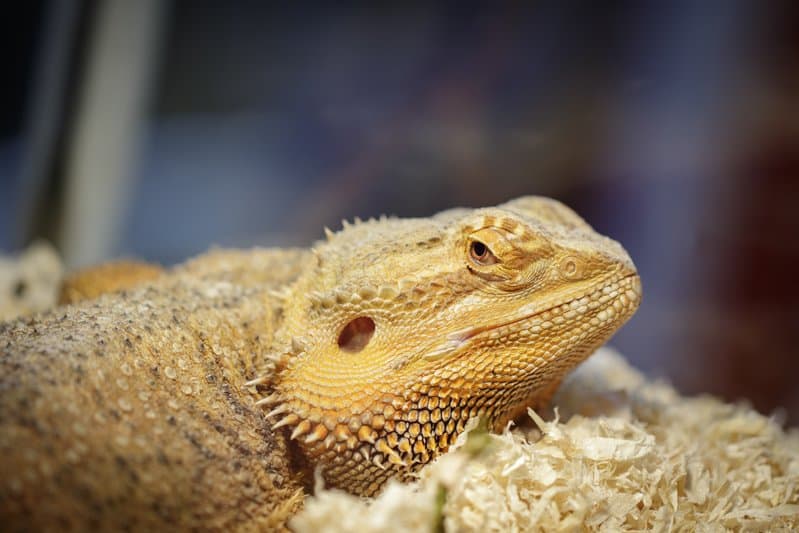
Territory or a suitable habitat plays an imperative role in keeping the bearded dragon healthy; setting up a proper tank is vital to provide your pet with a safe, clean, and comfortable place to live and a spot to hide.
Bearded dragons survive in an arid environment and subtropical woodlands, scrublands, savannas, shore areas, and into the grand interior deserts. Most of their time is spent basking on the rocks and walking for hours through the trees and bushes. If it's hot outside, it will bury itself underground. These omnivores forage for foods from plants to insects and mammals.
It's not always easy to satisfy a bearded dragon's basic needs. Hence, when you bring one home doing your best to replicate their natural habitat [2] is what you need to focus on.
Many first-time keepers make mistakes in setting up their enclosures, including but not limited to using the wrong substrate, which can negatively affect their beardies.
The environment setting must be apt for their survival. When cared for properly and housed in the appropriate tank size, bearded dragons can live for 14 years.
Related: Best Chameleon Cages
What are the different kinds of bearded dragon substrates?
In the wild, bearded dragons seem to prefer environments that include a lot of underground cavities, and owners who keep them as pets opt for decorative substrates that mimic this environment. However, to avoid the tendency to deposit feces on the floor, we need to use carpets at the bottom of the terrarium.
Before we dive into our top picks for bearded dragon substrate, let's briefly discuss the differences between them.
In order to understand reptile substrates generally, you'll need to know that there are two main distinctive groups: loose Particle Substrates and Non-Particle Substrates.
Loose Particle Substrate: Made Of Individual Substance
The loose particle type consists of substrates made up of many individual pieces of material, such as millet, calcium sand, alfalfa pellets, wood chips, or play sand for bearded dragons.
It is highly recommended that you do not use a loose substrate for your bearded dragon if you are feeding them inside the terrarium unless you keep a watchful eye on your pet, as they present potential health risks such as being ingested, especially with baby beardies.
They can also, in some cases, come into contact with their eyes and noses, which can result in severe damage such as irritation, injury, serious infection, or even blinding.
For the first 3-6 months or so, desert species (such as bearded dragons) should be kept in non-particulate substrate until they are big enough not to have problems with sand.
Still, it would be best to avoid loose particle substrates, especially if you have a bearded baby dragon, as they mainly have been known to ingest particles while eating.
Non-Particle Substrate: An All-Rounder Substrate Best Suited For Bearded Dragons
Non-particle are the second type of substrate. Carpets of this type don't have particles in them, which means they're solid pieces of material.
The most popular non-particle substrates for your beardie are newspaper, reptile carpet, ceramic tiles, and rubber sheet liners.
This type is better as they are easier to clean, hygienic, and refrains parasites' existence.
Non-particle substrates are the safest choice for your bearded dragon, especially if you are a beginner keeper. Due to their lack of impact, they do not cause your beardie to become infected. They also do not get stirred up and cause discomfort.
Furthermore, non-particle substrates tend to be easier to clean and, as a result, do not present the same risk of parasites and hygiene concerns as loose substrates.
What to Look For in a Good Substrate for Your Bearded Dragon?
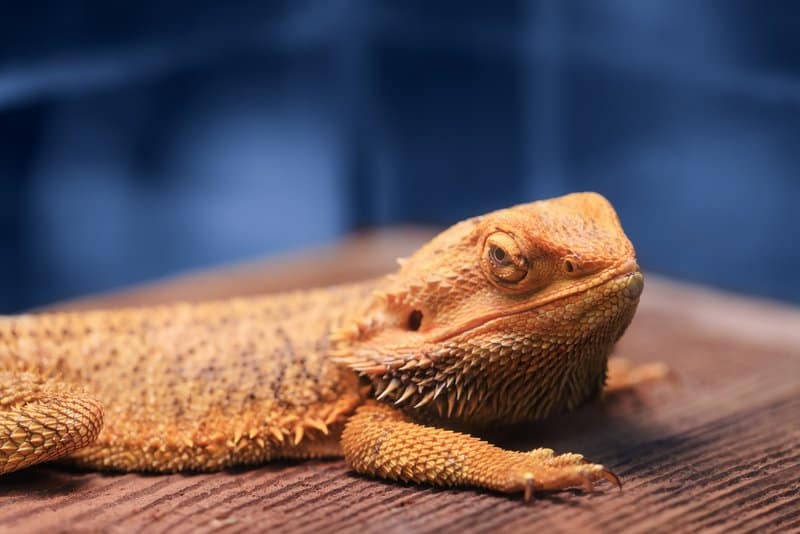
Selecting the proper bearded dragon substrate is just as crucial as the enclosure itself! The substrate serves as your beardie's enclosure's flooring. In other words, your reptile will spend the rest of its life on it! So it's not a decision you should take lightly.
If you ask a group of bearded dragon enthusiasts on social media or forums what type of substrate they use, you will likely start a heated debate.
In the beardie world, substrate materials are a contentious issue. Many misleading statements are floating around the internet when it comes to substrates, so which substrate is right for your bearded dragon?
Picking a material that's comfortable, safe, and easy to maintain is the top priority. You will create an unhygienic and dangerous environment for your bearded dragon if the substrate does not meet these requirements.
Choosing the best Bearded Dragon substrate depends on your budget and how much effort you want to put into keeping it clean.
Safe, affordable, nice-looking, and easily cleaned substrates are the most valuable.
Like other desert-dwelling lizards, bearded dragons require low humidity and high heat, which means that their substrate should not hold moisture.
Frequently Asked Questions
Now that you have decided to bring home a bearded dragon or even if you have one, you are aware of the best substrates that you can use to keep your reptile home in a friendly ambiance. But here are some of the common queries that most bearded dragon owners often have. Let's have a look!
How to Clean Bearded Dragon Substrate?
A bearded dragon needs to have a clean enclosure so that he can stay healthy and happy. Their feces are also smelly, as you probably noticed.
Make sure you do light cleaning every day (morning or evening) and deep cleaning once a week for your bearded dragon's tank.
An example of light cleaning would be:
- A bowl of water can be changed if you have one.
- Getting rid of any remaining bugs.
- Poop cleaning on the spot.
- Use hot water and soap to wash the water bowl.
The deep cleaning process would be as follows:
- Removing and cleaning the substrate
- Cleaning the tank's interior
- Disinfecting and washing the decorations and glassware
When you use paper towels you can easily replace them every day, however, depending on the substrate type and how often your dragon poops on it, the cleaning process might differ.
You can spot-clean your dragon's reptile carpet every few days with vinegar if it's not too dirty. Make a solution by mixing 50% vinegar with 50% water. Spray it on the contaminated areas after pouring it into a spray bottle. Then you can wipe it with a sponge or paper towel and return it to the cage after airing out.
The carpet can be washed with soap and hung to dry if there is any poop on it. A replacement carpet is always a good idea when cleaning the current one. Depending on the substrate, you might also consider replacing it entirely every few months.
Is Coconut Substrate Good for Bearded Dragons?
Bearded Dragons found in Australia mostly live in the natural forest habitat or sandy deserts, hence coconut substrate resembles their natural habitat and makes them feel comfortable inside the terrarium.
This substrate has ease of maintenance and gives natural flooring to the bearded dragon terrarium but one imperative aspect of the coconut substrate is that it is indigestible, so safety and health risks can pertain, especially if it's an infant bearded dragon.
Consumption of this substrate can cause intestinal impaction, which can even become life-threatening for the bearded dragon. This happens when the bearded dragon misses its food and accidentally ingests the bedding substrate of the cage.
So if you want to place coconut substrate as the bearded dragon flooring, it is best to feed them outside the tank or use a food bowl to prevent accidental consumption. Also, give the bearded dragon enough water to improve its digestive system.
Can You Use Paper Bedding For Bearded Dragons?
The bearded dragon substrates must be natural, eco-friendly, and can be cleaned easily. So placing newspapers, paper pallets, butcher paper, or recyclable products is the best bedding option.
Newspapers and paper towels are the cheapest options available in the market. They can be replaced easily and they are best suited for baby bearded dragons and hatchlings.
But one cannot eliminate the potential risk that newspaper ink poses. Besides, it's a hassle for the owners to cut and trim the newspaper to fit the terrarium's size.
If you are using newspaper bedding, it's necessary to have full coverage; otherwise, bugs can hide underneath, which may cause health problems for your pet. Furthermore, paper bedding looks unattractive and doesn't give a natural environment to the bearded dragons.
Is Sand OK For Bearded Dragons?
Sand is not a bad substrate; in fact, playing with sand for bearded dragons helps them practice their natural habit of digging tunnels. Most bearded dragons are accustomed to staying in dry woodland and deserts. But there is considerable controversy regarding sand usage as a substrate because accidental consumption of sand can pose a health risk for your oddly cute friend. This can be averted by ensuring that the beardie consumes enough calcium. They require calcium to strengthen their bone density and help them to grow.
Without adequate calcium, the beardie will fall sick. So in the wild, these bearded dragons infest on dirt to ensure their calcium intake. So, if your beardie feels its calcium intake is low, it will ingest dirt. If you want to create a natural setup for the bearded dragon, opt for a sand substrate made from calcium carbonate and quartz, which is the same type of sand found in the Australian Desert.
What Happens If My Bearded Dragon Eats Sand?
Every problem has a solution, so if your bearded dragon accidentally eats up sand, you need not change the substrate with a reptile carpet.
In fact, bearded dragons mostly enjoy staying in their natural habitat, and sand is one such substrate. These reptiles love to dig, create a multi-layer tunnel, and bury themselves in the comfort of the sand.
So in order to perform this activity, you need to provide lots of calcium to your new pet. But if it isn't enough, the bearded dragon can start consuming sand.
In that case, you can check with a vet to eradicate any significant health issues. The worst impact that sand consumption can cause is impaction, but this is secondary to the problems that arise due to lack of calcium, dehydration, or lighting. It also depends on the type of sand the bearded dragon has consumed, as most of them are habituated to living in compact sand with rocks, unlike the play sands used as substrates.
What Other Things Do Bearded Dragons Need In Their Enclosure?
Once you have decided to bring home a bearded dragon, the foremost thing to focus on is buying the tank. You can select between—PVC cages, glass aquariums, vision cages, or melamine cages. Next is the tank cover, which is based on the size of the tank. You will also have to place adequate light, preferably basking bulbs or long fluorescent tube lights, because bearded dragons require humidity and luminosity. You can also set a ceramic heater to keep the terrarium warm.
Apart from finding the most comfortable substrate for bedding, the beardie will need accessories such as rocks and branches so the dragon can climb and create its secluded hideout.
You can also install reptile hammocks and hides, so they can refrain from light and sleep heavily for weeks. It's also a good idea to place an impressive background for the bearded dragon tank and make the pet feel close to nature.
Final Thoughts
A substrate is the most essential part of decorating the bearded dragon tank. It not only provides them an ambiance close to nature but eradicates accidental cuts due to an uneven glass tank surface. A substrate will cover up the abrasions and give them soft bedding to walk around smoothly.
Bearded dragons are fascinating and exciting lizards, and the choice of substrate is one of the most critical advantages when it comes to keeping them happy and healthy. There are many different substrates to choose from, and some are better than others for various reasons. Some are more absorbent, others have more health value and provide the right temperature and humidity.
If you're new to Bearded Dragons or the entire reptile pet industry, you may have difficulty finding a substrate that will work for you.
Various substrate types are being sold as "Bedding" that actually aren't good or at least best for bearded dragons.
All of the substrates mentioned in this article are safe and approved by the Bearded Dragon owners community and the overall user reviews on Amazon and various social media groups.
The bearded dragon is an oddly cute little animal to pet, and its low maintenance is a cherry on top for the owners.
Deciding on giving them the best nutritional supplement to create an abode, preferably a natural habitat with the right substrate choice, will entice the bearded dragon. If you plan to have a juvenile or baby bearded dragon, keep a watchful eye on loose substrate or place non-particle substrate to eliminate accidental consumption risks.
References:
- 10 Bearded Dragon Facts You Should Know | petMD. Petmd.com. Retrieved from https://www.petmd.com/reptile/care/10-things-you-didnt-know-about-bearded-dragons
- Pogona. (2020, November 13). Wikipedia. https://en.wikipedia.org/wiki/Pogona#Habitat
